Mercedes presents concept electric van ‘Sustaineer’
Mercedes-Benz Vans debuts the ‘Sustaineer’ concept designed to show a tangible future of urban delivery traffic. The all-electric van based on the Mercedes-Benz eSprinter has innovations and technical solutions on board that have been “designed for possible series production”.
++ This article has been updated. Kindly continue reading below. ++
The name Sustaineer is an artificial word made up of the terms Sustainability and Pioneer. Mercedes-Benz Vans thus defines the thrust of the technology carrier: it is intended to pave the way for more sustainable urban delivery transport. With the technologies onboard, the Sustaineer demonstrates how the last mile in the transport business can be covered in a climate-neutral way and how green electricity can be produced, and the air quality in cities can be actively improved.
Specifically, in addition to a battery-electric drive, the model has fine dust filters on the front module and underbody that can “compensate for emissions by over 50 per cent”. In addition, there is a solar panel on the roof for several thousand kilometres of additional range per year, components made of recycled materials and a heating system close to the body that is intended to increase comfort and range. According to Mercedes-Benz Vans, the innovations are designed “so that they can be used in future generations of vehicles”.
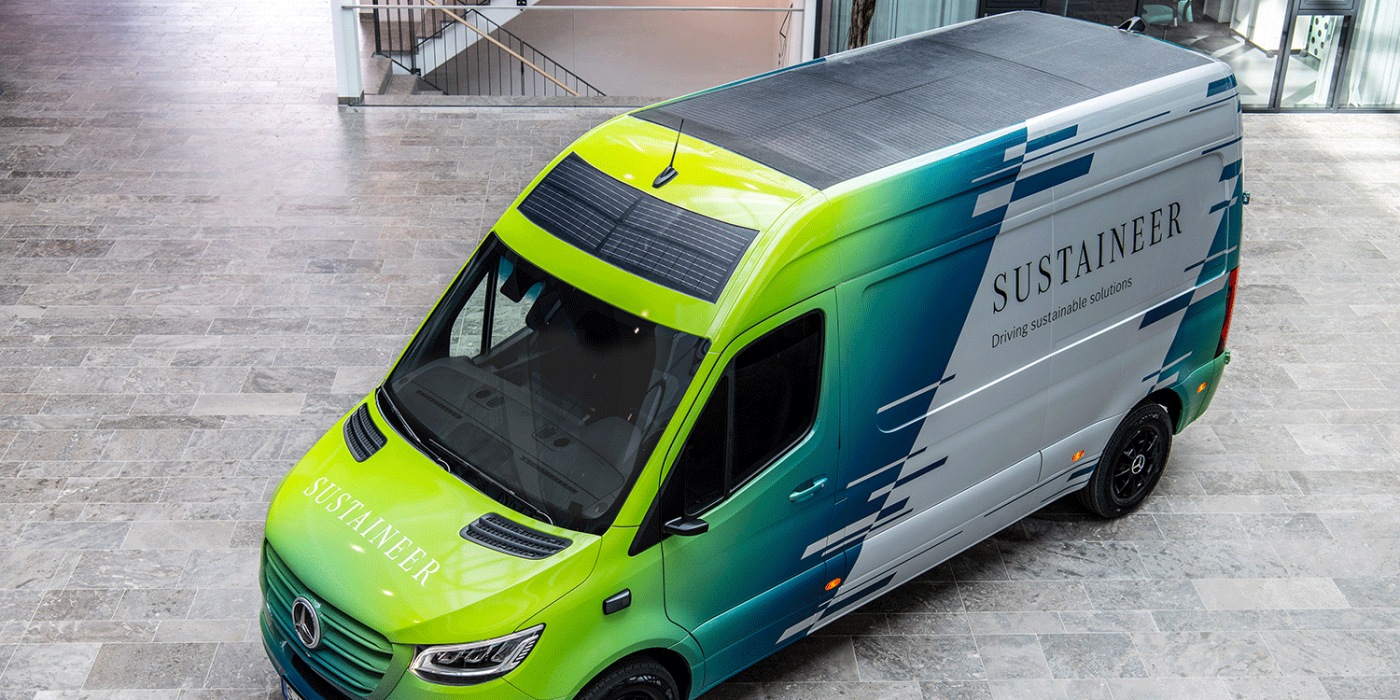
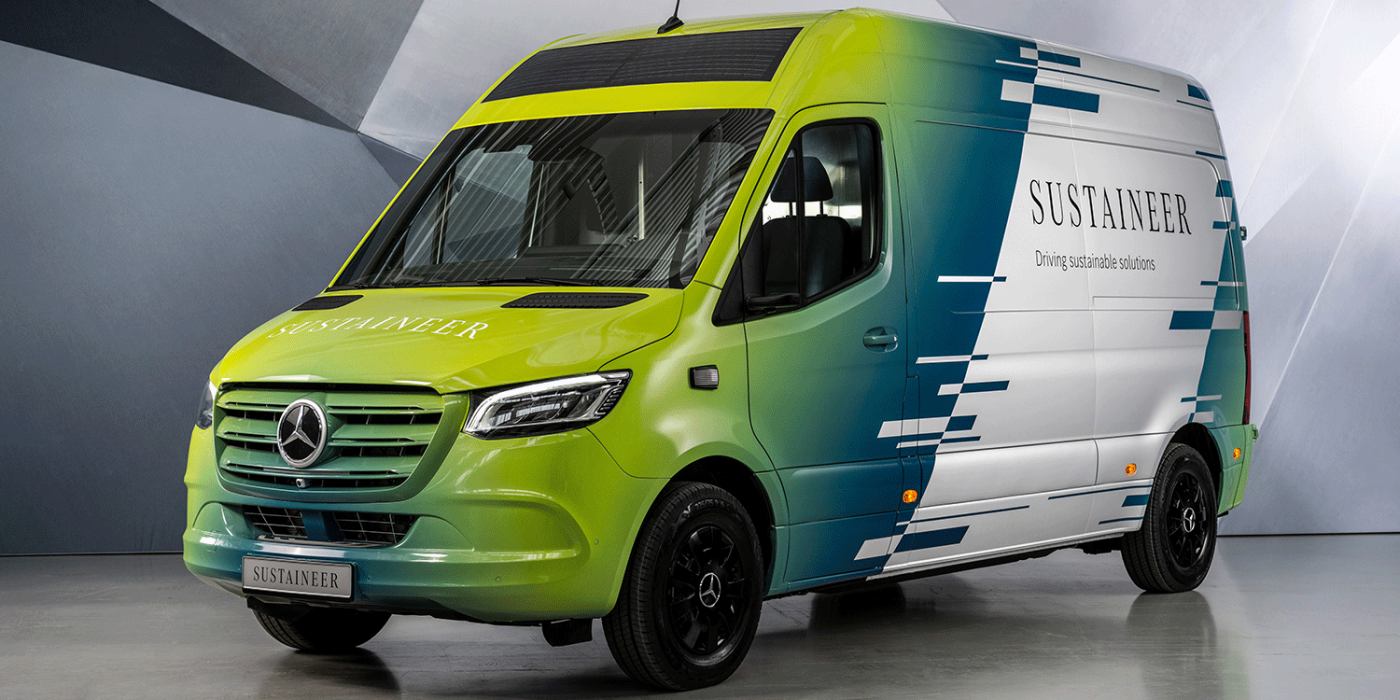
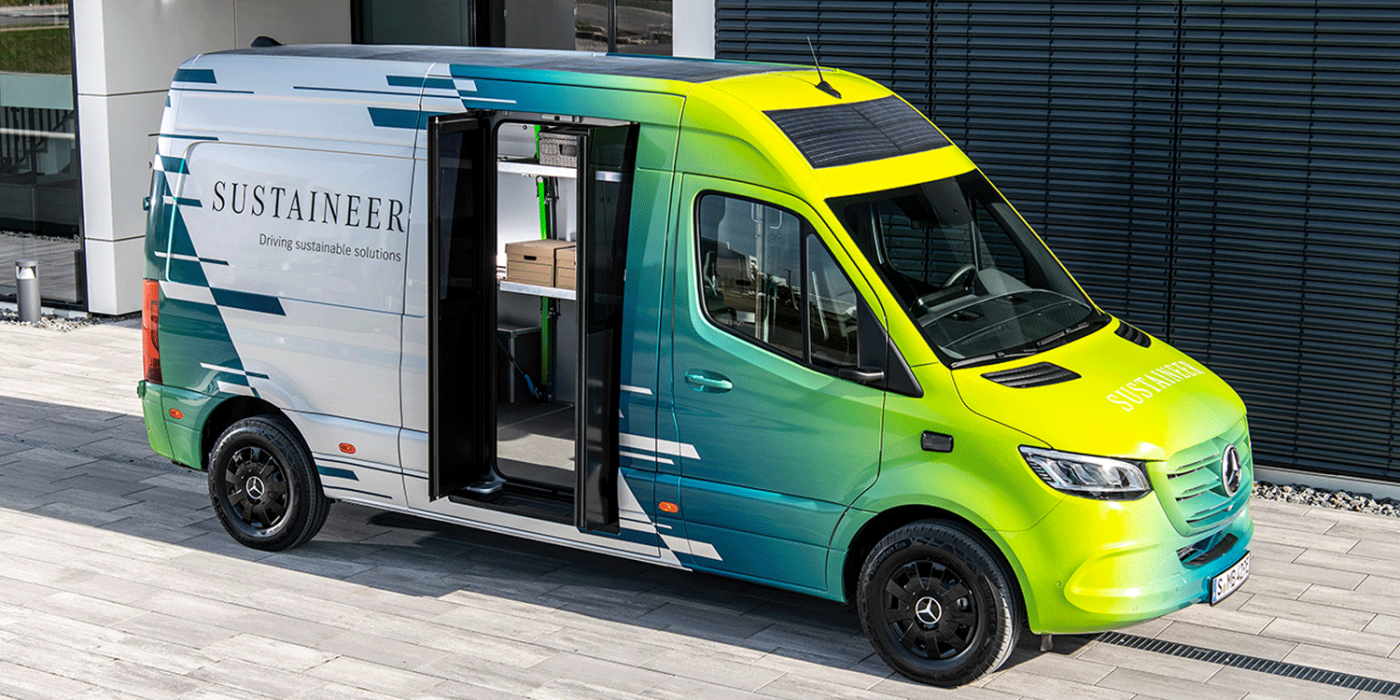
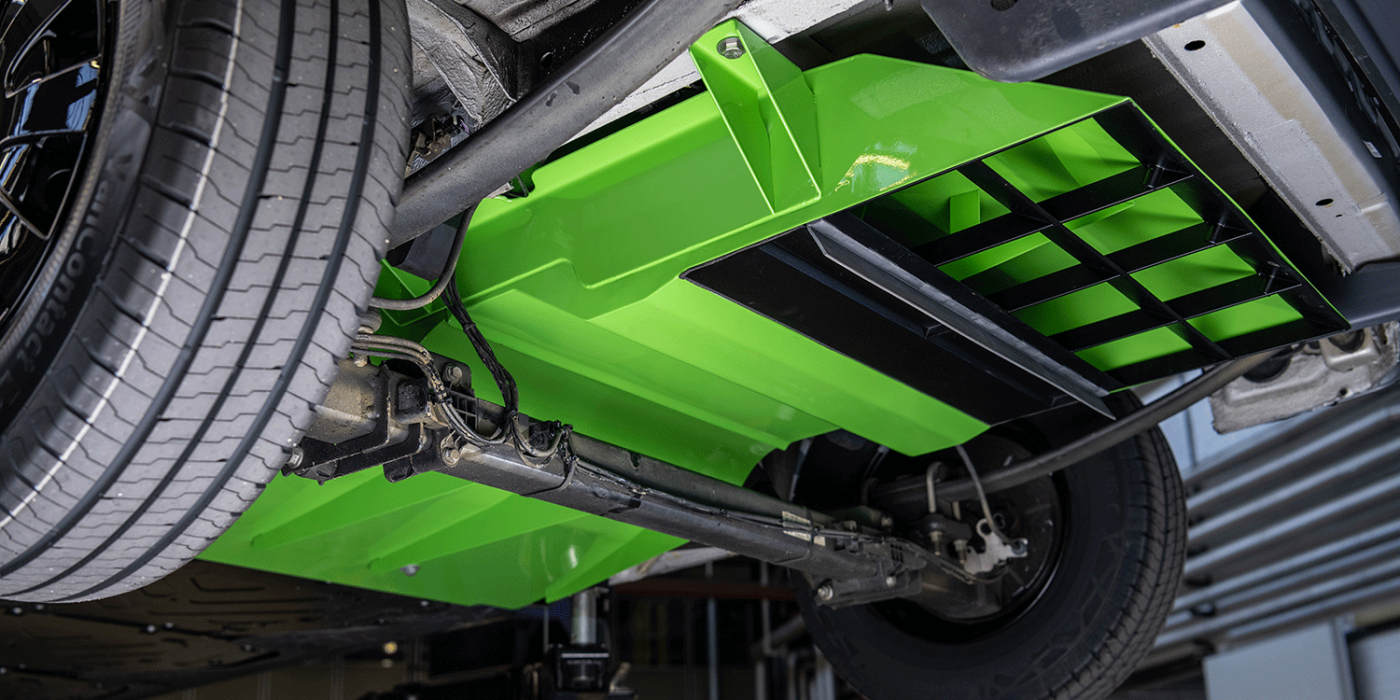
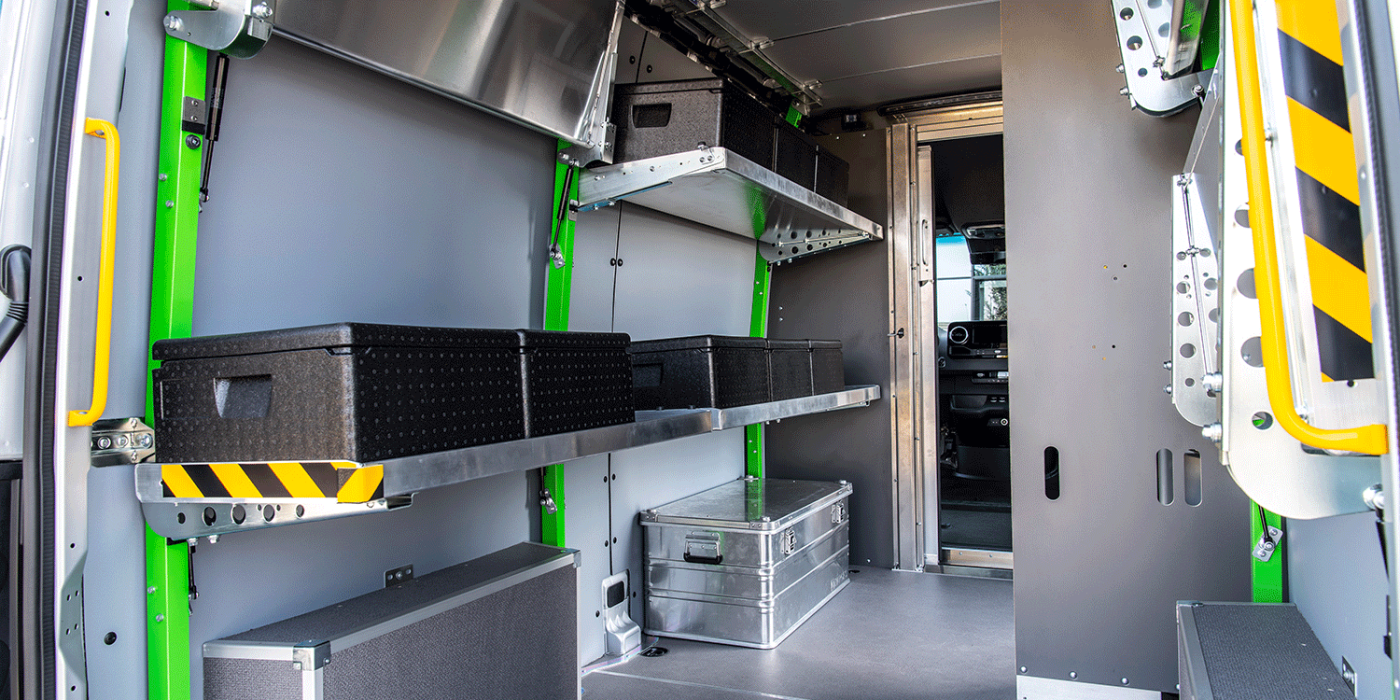
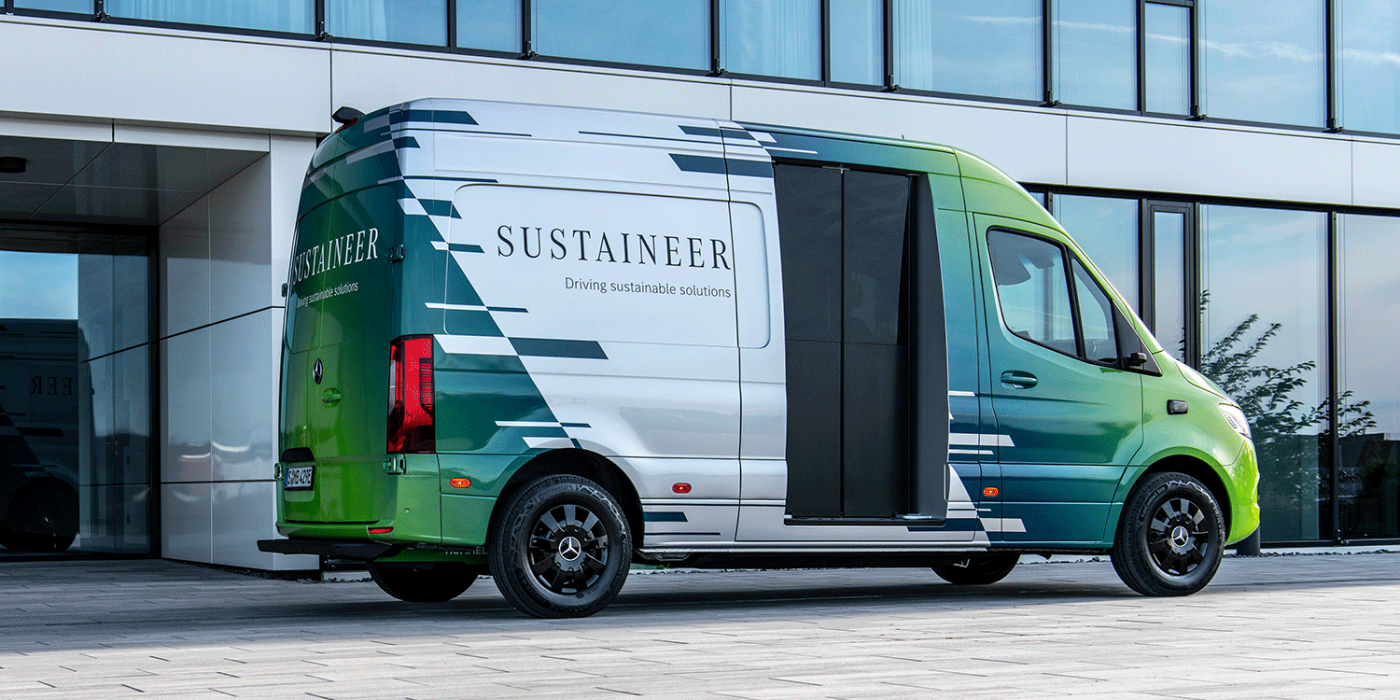
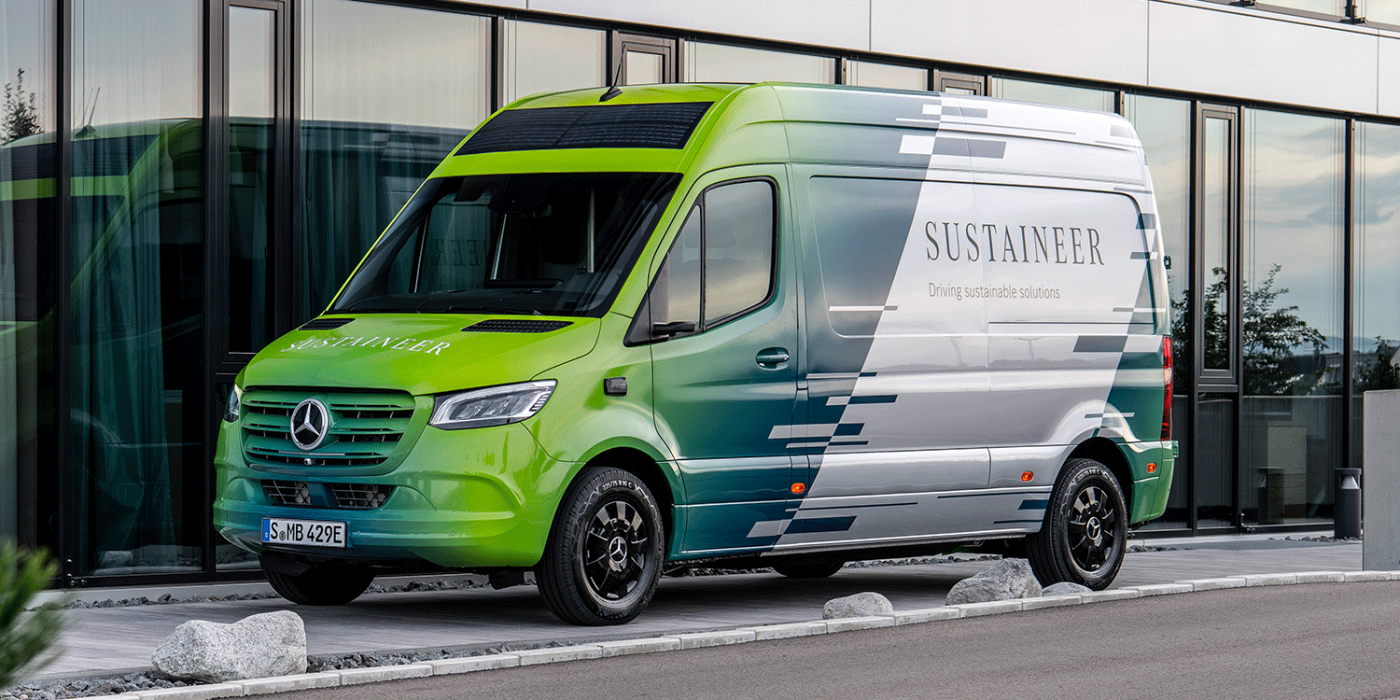
The background to this is that Mercedes-Benz Vans is pursuing the goal of making the fleet of new private and commercial vans CO₂-neutral over the entire life cycle by 2039 as part of the Group’s “Ambition 2039” business strategy – from development to the supplier network, own production, electrification of products, renewable energies for the use phase of electric vehicles and recycling. All of the company’s van plants are to produce in a CO2-neutral manner as early as 2022 and use only electricity from renewable energies.
The already electrified portfolio of the Mercedes division includes the eVito panel van, the eSprinter, the eVito Tourer and the EQV. Next year, smaller, electric vans will also go on sale with the eCitan and the EQT. From the middle of the decade, “all-new vehicle architectures will then be exclusively electric, and Mercedes-Benz Vans is developing a completely new vehicle architecture for this purpose with VAN.EA”, according to an accompanying press release.
Mercedes-Benz also announces that it will successively introduce a sustainable repair concept in all van segments from the second half of 2022 to extend the life cycles of the high-voltage batteries installed in the vehicles. The aim is to reduce the use of primary resources in the area of powertrain and battery technology by 40 per cent by 2030 compared to today.
Update 05 September 2022
With the technology demonstrator concept Sustaineer, Mercedes-Benz Vans gave a concrete preview of what sustainability in urban delivery transport of the future could look like last year. Now the further developed all-electric van based on the Mercedes-Benz eSprinter is getting four new updates. These include an improved heating system, an automatic radiator blind, a new ‘mobilisation seat’ and the driver coaching app.
The mobilisation seat was developed in cooperation with Doctors, physiotherapists and sports scientists, among others. As a result, the company boasts that “muscle stiffness in the back can be reduced and a positive effect on the high physical load of the drivers can be achieved”. The driver coaching app is stated to act as an “intelligent co-driver”, offering specific assistance and advice to optimise driving behaviours. The stated aim is to provide “significant improvement in operating range as well as the conservation of resources”.
Features already familiar from the predecessor, such as fine dust filters on the front module and underbody, a solar panel on the roof and components made from recycled materials, can still be found on board the Sustaineer. The technical solutions installed in the Sustaineer were designed with possible series production readiness in mind, so that their use in future generations of Mercedes-Benz Vans may not be far off.
daimler.com, mercedes-benz.com (update)




0 Comments